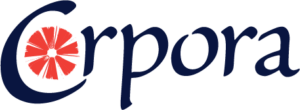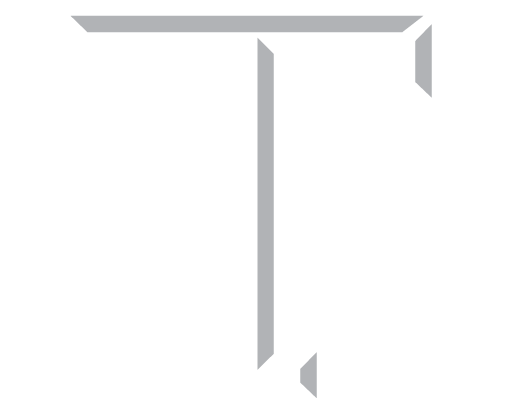DH Tools, Software, and Services
This page provides a curated list of tools, software, and services that are commonly used by Digital Humanists.
See "Finding the Right Platform: A Crosswalk of Academy-Owned and Open-Source Digital Publishing Platforms" for an in-depth comparison of Fulcrum, Humanities Commons, Janeway, Manifold, Mukurtu, Omeka, Open Journal Systems, Pressbooks, PubPub, and Scalar.
Code Editors
Oxygen XML Editor
Oxygen XML Editor provides a comprehensive suite of XML authoring and development tools designed to accommodate a large number of users ranging from beginners to XML experts.
Faculty, staff, and students from Texas A&M can access the latest version of Oxygen for free by using this license key. Users who use this key must update it every year in September to retain full access to Oxygen. Paste all 9 lines, between the start and end markers, in the license registration dialog box within Oxygen by going to Menu > Help > Register.
 Corpora is "a dataset studio for the Digital Humanities." It's billed as such because it allows scholars with little to no programming experience to create a data schema for their digital projects (referred to as a "corpus"). Once that schema is created, data can immediately be created according to that schema via dynamically generated web forms, giving their corpus a backend that can be populated collaboratively. Aside from allowing data to be collected, Corpora also has a "baked-in" API (also dynamically generated) that then allows independent website frontends (or any computational tool) to browse, search, and explore the data in their corpus.
Corpora is "a dataset studio for the Digital Humanities." It's billed as such because it allows scholars with little to no programming experience to create a data schema for their digital projects (referred to as a "corpus"). Once that schema is created, data can immediately be created according to that schema via dynamically generated web forms, giving their corpus a backend that can be populated collaboratively. Aside from allowing data to be collected, Corpora also has a "baked-in" API (also dynamically generated) that then allows independent website frontends (or any computational tool) to browse, search, and explore the data in their corpus.
Beyond acting as backend data storage, Corpora is architected in such a way as to allow for plugins to be developed that drastically broaden its capacity. Examples include the ability to OCR documents en-masse with Tesseract or Google Cloud Vision, the ability to perform natural language processing tasks, etc. Plugins also serve as a way to containerize custom content types and code to support specific projects, like the plugins for the Advanced Research Consortium, The New Variorum Shakespeare, The Carlyle Letters Online, and The Maria Edgeworth Letters Project.
Corpora was developed by Dr. Bryan Tarpley, Associate Research Scientist for Critical Infrastructure Studies at CoDHR. To work with Corpora, please contact us at codhr@tamu.edu.
Data Visualization Tools
ArcGIS StoryMaps
ArcGIS StoryMaps is a tool that transforms Geographic Information Systems (GIS)-based maps into digital stories. Users can also add text, photos, and videos to their existing ArcGIS web maps and web scenes to create an interactive narrative.
See the versatility of ArcGIS StoryMaps in the ArcGIS Community Gallery.
Gephi is a free and open-source network-visualization platform. It is meant to be used as a complementary, visual tool to traditional statistics.
In Gephi, users interact with the representation of their graph, manipulating its structures, shapes, and colors, to reveal hidden properties in their data or highlight relationships between various elements.
Lexos
Lexos is a web-based tool designed for transforming, analyzing, and visualizing texts. Lexos is designed for use primarily with small to medium-sized text collections, and especially for use with ancient languages and languages that do not employ the Latin alphabet. Lexos was created as an entry-level platform for Humanities scholars and students new to computational techniques while providing tools and techniques sophisticated enough for advanced research.
Voyant Tools is a free and open-source, web-based text reading and analysis environment designed to make it easy for users to work on their own texts in a variety of formats, including plain text, HTML, XML, PDF, RTF, and MS Word.
Once a text or collection of texts is uploaded to Voyant, their collection of tools can be used for a variety of frequency analysis visualizations, or to add functionality to online collections, journals, blogs or web sites.
Omeka
Omeka is a series of web-publishing platforms for digital collections and media-rich online exhibits. Omeka provides users with three solutions to build their digital projects:
1. Omeka Classic: The Omeka Classsic software provides a free and open source answer to the need for a web publishing platform that centers the importance of standards-based metadata and allows content experts to showcase their unique knowledge about their collections. There are nearly 100 plugins that have been created and are maintained in order to expand Omeka Classic's functionality.
Omeka Classic requires users to have their own server with certain requirements. Users without access to their own server can try the Omeka.net hosting service (more information below) or use an external hosting service (see Web Hosting Services on this page).
See the versatility of Omeka Classic in the Omeka Classic Site Showcase.
Documentation for Omeka Classic.
2. Omeka.net: Omeka.net provides a cost-effective solution for Omeka users, both organizations and individuals, who do not have the ability or resources to download and run Omeka Classic on their own servers. Users select a paid plan depending on their needs.
See the variety of sites Omeka.net hosts in the Omeka.net Site Showcase.
Learn more about Omeka.net Pricing.
3. Omeka S: Omeka S satisfies the needs of larger institutional users who require a web publishing platform that offers a single point of administration for installation, software upgrades, and the extension of functionality and look and feel for all of the sites developed in the installation. Omeka S provides administrators with control over their networks: Omeka S uses JSON-LD as its native data format; every Omeka S Resource (item, item set, media) has a URI, and the core software includes Resource Description Framework (RDF) vocabularies, which maximizes its data interoperability with other data publishers; users can import any LOD vocabulary of their choice and develop a data model that matches the needs of their content.
WordPress is a personal web-publishing platform that hosts over 43% of all sites across the web. It prides itself on being an "out of the box" system (i.e., it's accessible to users with limited tech experience) while still remaining customizable to more tech-savvy users. WordPress is built on PHP and MySQL, and licensed under the GPLv2.
See the versatility of WordPress in the WordPress Website Showcase.
Jekyll is a "static site generator", a software that helps users generate plain HTML files for their website. In contrast to dynamic websites, static websites do not use a database to store information; rather, all information to be displayed on each webpage is already contained in an HTML file for that webpage. As a result, static websites are simple to preserve and are more sustainable.
Jekyll also has built-in support for GitHub Pages. Learn more at "About GitHub Pages and Jekyll".
Note: Web hosting and domain hosting are not the same. Web hosts provide server space for a user to store content for their website while domain hosts provide a web address (i.e., a URL) for a website. Some web hosts and domain hosts offer both web hosting and domain hosting to users, but costs vary for all services.
CoDHR offers web and domain hosting for a limited time for projects with a Principal Investigator at Texas A&M.
Reclaim Hosting offers affordable web hosting (from static HTML files to web applications and databases) geared toward the academic community.
GitHub (owned by Microsoft) offers free git repositories for storing versioned files, whether they be TEI-encoded XML documents or HTML pages.
GitHub repositories can be configured to also serve up static HTML pages.
